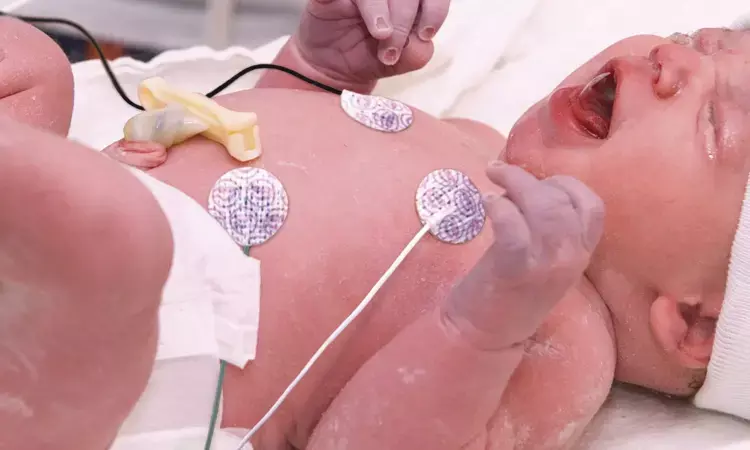- Home
- Medical news & Guidelines
- Anesthesiology
- Cardiology and CTVS
- Critical Care
- Dentistry
- Dermatology
- Diabetes and Endocrinology
- ENT
- Gastroenterology
- Medicine
- Nephrology
- Neurology
- Obstretics-Gynaecology
- Oncology
- Ophthalmology
- Orthopaedics
- Pediatrics-Neonatology
- Psychiatry
- Pulmonology
- Radiology
- Surgery
- Urology
- Laboratory Medicine
- Diet
- Nursing
- Paramedical
- Physiotherapy
- Health news
- Fact Check
- Bone Health Fact Check
- Brain Health Fact Check
- Cancer Related Fact Check
- Child Care Fact Check
- Dental and oral health fact check
- Diabetes and metabolic health fact check
- Diet and Nutrition Fact Check
- Eye and ENT Care Fact Check
- Fitness fact check
- Gut health fact check
- Heart health fact check
- Kidney health fact check
- Medical education fact check
- Men's health fact check
- Respiratory fact check
- Skin and hair care fact check
- Vaccine and Immunization fact check
- Women's health fact check
- AYUSH
- State News
- Andaman and Nicobar Islands
- Andhra Pradesh
- Arunachal Pradesh
- Assam
- Bihar
- Chandigarh
- Chattisgarh
- Dadra and Nagar Haveli
- Daman and Diu
- Delhi
- Goa
- Gujarat
- Haryana
- Himachal Pradesh
- Jammu & Kashmir
- Jharkhand
- Karnataka
- Kerala
- Ladakh
- Lakshadweep
- Madhya Pradesh
- Maharashtra
- Manipur
- Meghalaya
- Mizoram
- Nagaland
- Odisha
- Puducherry
- Punjab
- Rajasthan
- Sikkim
- Tamil Nadu
- Telangana
- Tripura
- Uttar Pradesh
- Uttrakhand
- West Bengal
- Medical Education
- Industry
Back versus chest ECG electrode placement: Preset back ECG electrodes promising in neonates requiring advanced resuscitation

USA: A pilot randomized controlled trial published in Resuscitation has shown encouraging results of preset-back ECG electrodes, attached to the back of the newborn, in neonates requiring advanced resuscitation.
The recent Neonatal Resuscitation Program recommends the early utilization of an ECG (electrocardiogram) for non-vigorous newborns in the delivery room. However, placing ECG electrodes on the chest may delay obtaining a reliable heart rate and could interfere with chest compressions. A previous study showed that preset ECG electrodes are quicker than a pulse oximeter (POX) for heart rate detection.
Rashmi Gulati, University of South Alabama Children’s and Women’s Hospital, AL, USA, and colleagues aimed to compare time to detect a reliable HR using back-placed ECG electrodes versus standard front placement.
For the study, infants were randomly assigned to back (n = 85) or chest (n = 89) electrode placement. Time measurement began upon placing infants on a Panda warmer ResusView. Failure was defined as no heart rate detected within 5 minutes. The intention-to-treat analysis compared HR signal acquisition time between groups.
Based on the study, the researchers reported the following findings:
· Both groups showed similar proportions of detectable HR within the first minute.
· Median time to obtain HR was 26 seconds for the chest group and 21 seconds for the back group.
· A large number of vigorous infants were included. In the chest group, these vigorous infants had shorter HR acquisition times than non-vigorous infants (Mean ± SD of 34 ± 48 seconds vs. 50 ± 44 seconds respectively).
· Failure rates and time to acquire an HR for infants who were non-vigorous and required advanced resuscitation were similar between the back and chest groups.
"Preset back ECG electrodes have shown encouraging results in neonates requiring advanced resuscitation," the researchers wrote. "There is a need for further studies to enhance guidance during neonatal resuscitation."
Reference:
Gulati R, Sayegh L, McCurley C, Eyal F, Zayek M. Back vs. chest ECG electrode placement in neonatal resuscitation: A pilot randomized controlled trial. Resuscitation. 2023 Nov;192:109961. doi 10.1016/j.resuscitation.2023.109961. Epub 2023 Sep 9. PMID: 37678627.
Dr Kamal Kant Kohli-MBBS, DTCD- a chest specialist with more than 30 years of practice and a flair for writing clinical articles, Dr Kamal Kant Kohli joined Medical Dialogues as a Chief Editor of Medical News. Besides writing articles, as an editor, he proofreads and verifies all the medical content published on Medical Dialogues including those coming from journals, studies,medical conferences,guidelines etc. Email: drkohli@medicaldialogues.in. Contact no. 011-43720751


